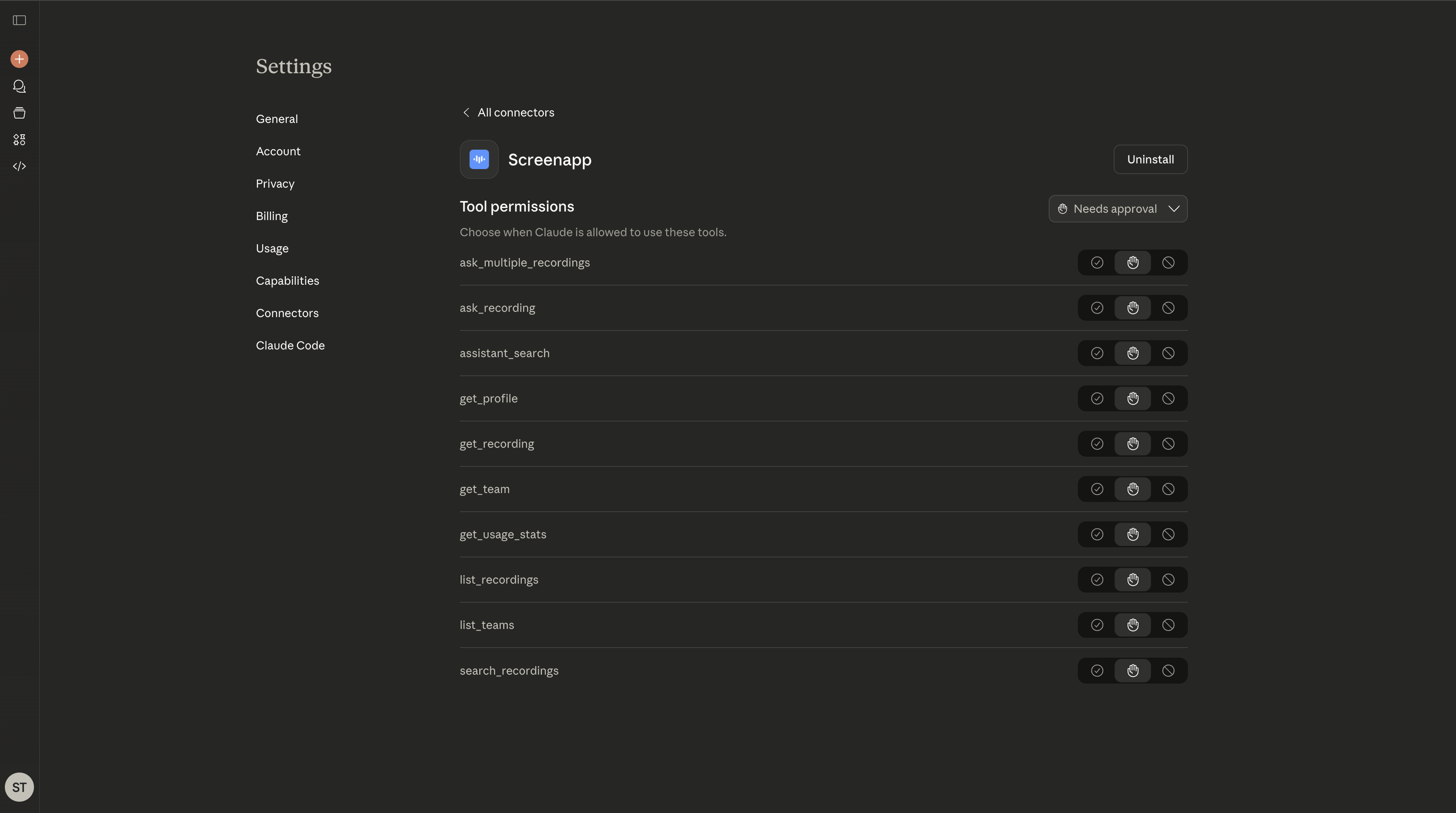With countless video hosting platforms vying for attention, choosing the right one for your business or personal needs can be overwhelming. This comprehensive guide breaks down the top 10 options, comparing features, pricing, and performance to help you make an informed decision.
Introduction
In today’s digital age, video content reigns supreme. Whether you’re a business aiming to boost brand awareness or an individual looking to share your passion, a reliable video hosting platform is essential. With countless options available, choosing the right one can be overwhelming. That’s why we’ve compiled a comprehensive review of the top 10 video hosting platforms.
To ensure a fair and informative comparison, we’ve evaluated each platform based on key criteria including pricing, feature set, performance, and user experience. Our goal is to provide you with the information needed to select the ideal platform for your specific needs.
Get ready to dive into our in-depth analysis and discover the best video hosting solution for you.
Top Video Hosting Platforms at a Glance
| Tool name | Overview | Pros | Cons | Best For | Rating |
|---|---|---|---|---|---|
| YouTube | World’s largest video-sharing platform, free video hosting and distribution. | Massive user base, strong analytics, free, easy to embed videos. | Ad-supported, fierce competition, potential copyright issues. | Individual content creators, businesses, free options seekers. | ★★★★☆ |
| Vimeo | Known for high-quality video playback and professional aesthetic. | Excellent video quality, user-friendly, community focus, HD and 4K support. | Limited free storage, higher pricing compared to competitors. | Video creators, filmmakers, businesses prioritizing video quality. | ★★★★☆ |
| Wistia | Video hosting for business and marketing, advanced analytics and customization. | In-depth video analytics, strong customization, heatmaps and audience insights. | Business-focused, steep pricing, limited free plan. | Businesses optimizing video performance and gathering detailed data. | ★★★★☆ |
| Dailymotion | Popular platform with a focus on user-generated content. | Large audience reach, free, supports multiple video formats. | Ad-heavy, less advanced features compared to competitors. | Individual content creators looking for a free platform. | ★★★☆☆ |
| Facebook Video | Native video hosting, allows businesses and individuals to share videos. | Massive user base, organic reach potential, integration with Facebook advertising. | Video quality can vary, algorithm changes can impact visibility. | Businesses and individuals leveraging Facebook’s audience and ads. | ★★★★☆ |
| Twitch | Primarily a live streaming platform, offers video hosting for past broadcasts. | Large gaming community, interactive features, strong focus on live content. | Geared towards live streaming, limited video editing tools. | Streamers, gamers, engaging with a live audience. | ★★★☆☆ |
| Brightcove | Cloud-based video platform designed for businesses of all sizes. | Comprehensive video management tools, advanced analytics, customization options. | High pricing for small businesses, steep learning curve. | Enterprises and large businesses with complex video needs. | ★★★★☆ |
| Gumlet | Modern video hosting and image optimization platform for fast, secure, and scalable media delivery. | High-performance CDN, AI-powered subtitles, ad-free player, robust security features. | Limited free plan, less brand recognition compared to legacy platforms. | Businesses, creators, and developers needing fast, secure, and customizable video hosting. | ★★★★☆ |
| Vidyard | Video platform for sales and marketing, video hosting, creation, and analytics. | Sales-focused features, video analytics and insights, CRM integration. | Limited free plan, geared towards sales and marketing. | Businesses using video for sales and lead generation. | ★★★★☆ |
| Amazon S3 | Cloud storage service for hosting videos, requires additional tools for management. | Scalable storage, cost-effective for large video libraries, customizable. | Requires additional tools for video management, complex setup. | Large enterprises with in-house video infrastructure and specific storage needs. | ★★★☆☆ |
| Kaltura | Video platform with wide range of features, including hosting, live streaming, management. | Versatile platform, customizable, strong focus on enterprise solutions. | Complex to set up, high pricing. | Enterprises with complex video needs and a budget for a comprehensive solution. | ★★★★☆ |
Top 12 Video Hosting Platforms
1. YouTube

- Brief overview: YouTube is the world’s largest video-sharing platform, offering free video hosting and distribution.
- Pros:
- Massive user base
- Strong built-in analytics
- Free to use
- Easy to embed videos
- Cons:
- Ad-supported
- Competition is fierce
- Potential for copyright issues
- Best for: Individual content creators, businesses looking for wide audience reach, and those who prioritize free options.
- Personal assessment: YouTube is an excellent platform for building a large audience. Once that is achieved, selling YouTuber merch can be a great way to monetize the channel, but it can be challenging due to competition. Its free tier makes it accessible to everyone, but paid options offer additional features and control.
- Rating: 4.5/5
2. Vimeo
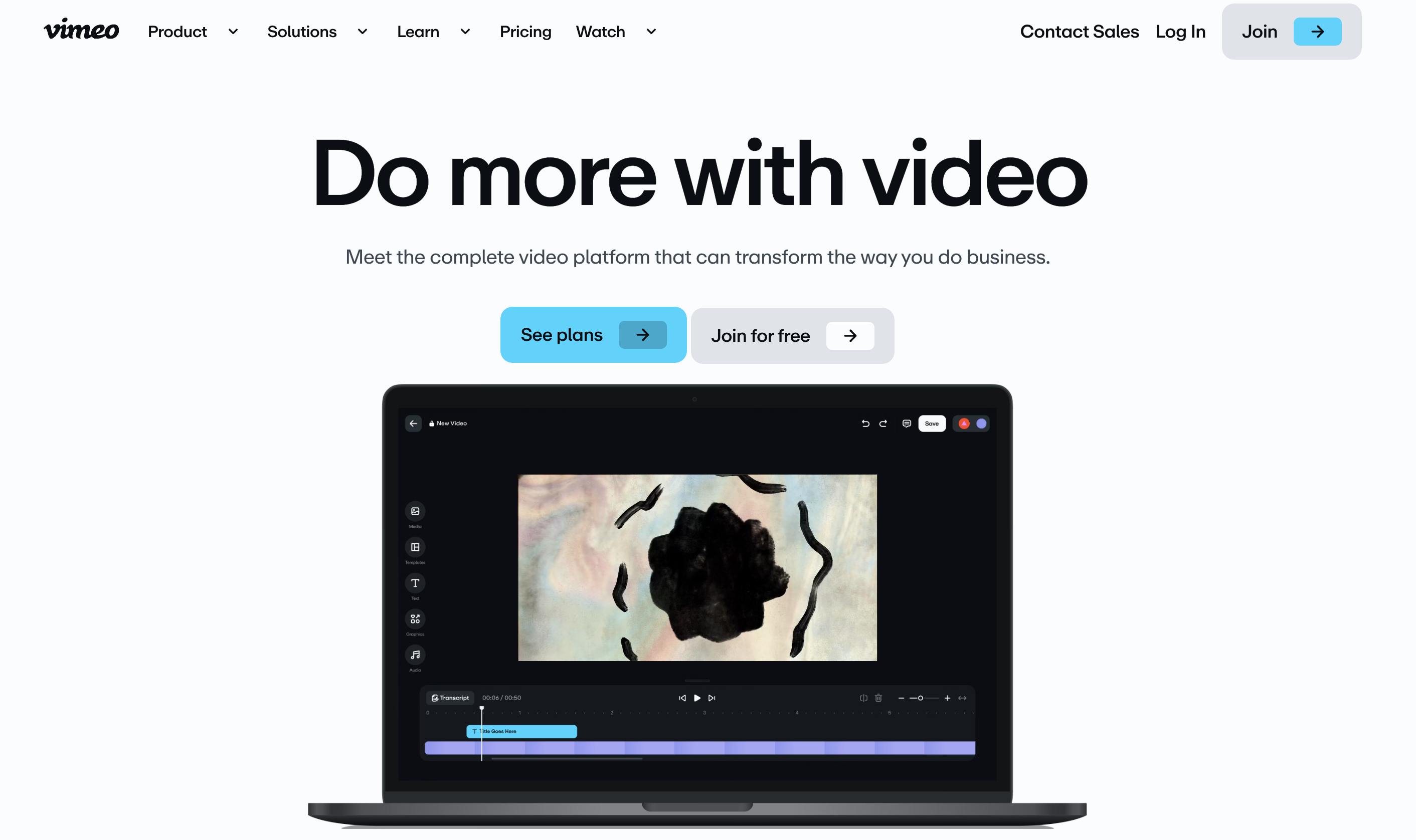
- Brief overview: Vimeo is a video-sharing platform known for its high-quality video playback and professional aesthetic.
- Pros:
- Excellent video quality
- User-friendly interface
- Strong community focus
- HD and 4K support
- Cons:
- Limited free storage
- Pricing can be higher compared to competitors
- Best for: Video creators, filmmakers, and businesses that prioritize video quality and aesthetics.
- Personal assessment: Vimeo offers a superior viewing experience and a more curated platform than YouTube. While the free tier is limited, paid plans provide excellent value for professionals.
- Rating: 4.5/5
3. Wistia
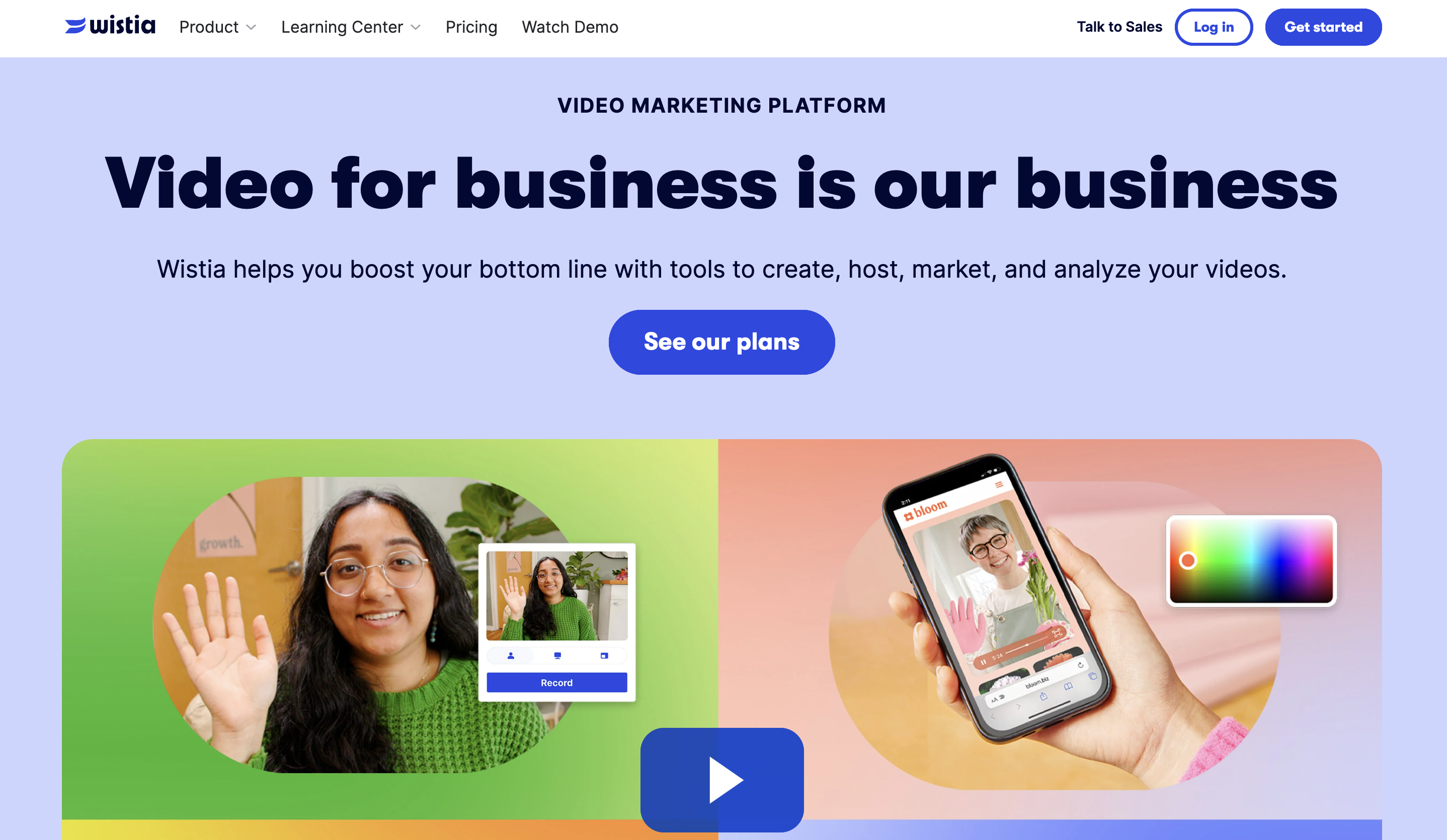
- Brief overview: Wistia is a video hosting platform focused on business and marketing, offering advanced analytics and customization options.
- Pros:
- In-depth video analytics
- Strong customization options
- Heatmaps and audience insights
- Cons:
- Primarily business-focused, pricing can be steep
- Limited free plan
- Best for: Businesses looking to optimize video performance and gather detailed audience data.
- Personal assessment: Wistia is a powerful tool for businesses seeking to maximize the impact of their video content. While it might be overkill for casual users, marketers and sales teams will appreciate its features. Rating: 4/5
4. Dailymotion
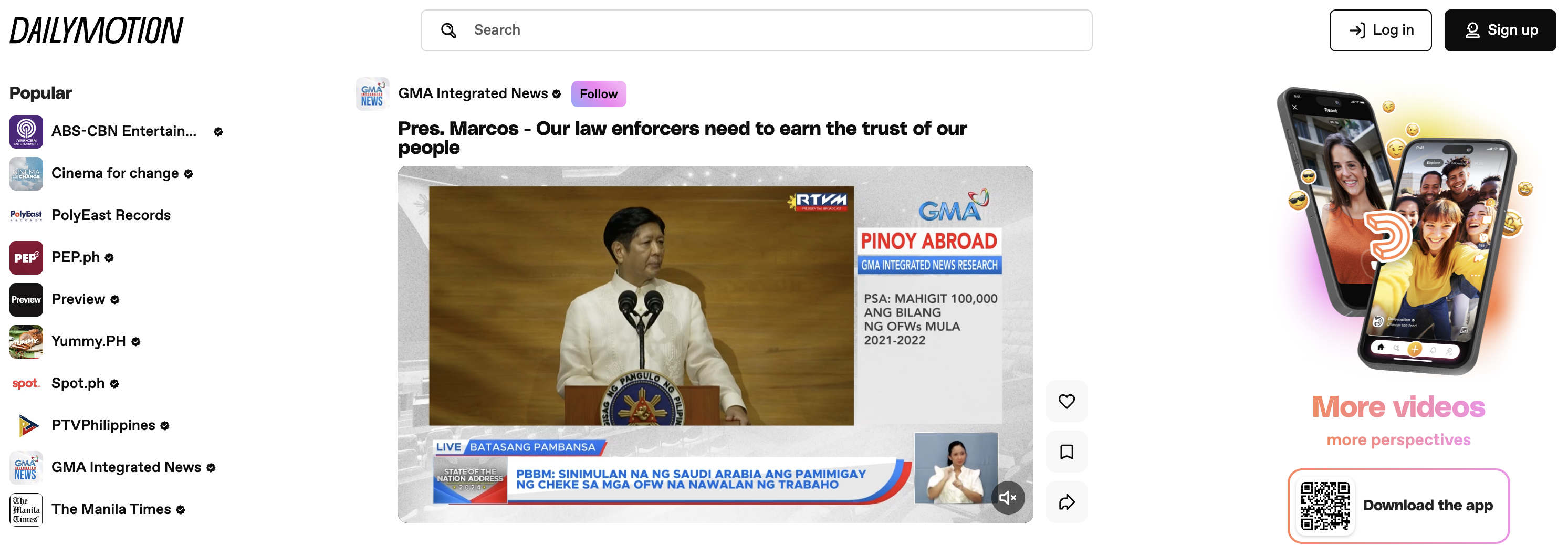
- Brief overview: Dailymotion is a popular video-sharing platform with a focus on user-generated content.
- Pros:
- Large audience reach
- Free to use
- Supports multiple video formats
- Cons:
- Ad-heavy
- Less advanced features compared to competitors
- Best for: Individual content creators looking for a free platform with a decent audience.
- Personal assessment: Dailymotion is a viable option for those starting out in video content creation. While it lacks some of the advanced features of other platforms, it offers a solid foundation for building an audience.
- Rating: 3/5
5. Facebook Video

- Brief overview: Facebook offers native video hosting, allowing businesses and individuals to share videos directly on the platform.
- Pros:
- Massive user base
- Organic reach potential
- Integration with Facebook advertising
- Cons:
- Video quality can vary
- Algorithm changes can impact visibility
- Best for: Businesses and individuals looking to leverage Facebook’s audience and advertising capabilities.
- Personal assessment: Facebook video is a powerful tool for reaching a wide audience, but organic reach can be challenging. It’s essential to have a solid content strategy to maximize visibility.
- Rating: 4/5
6. Twitch
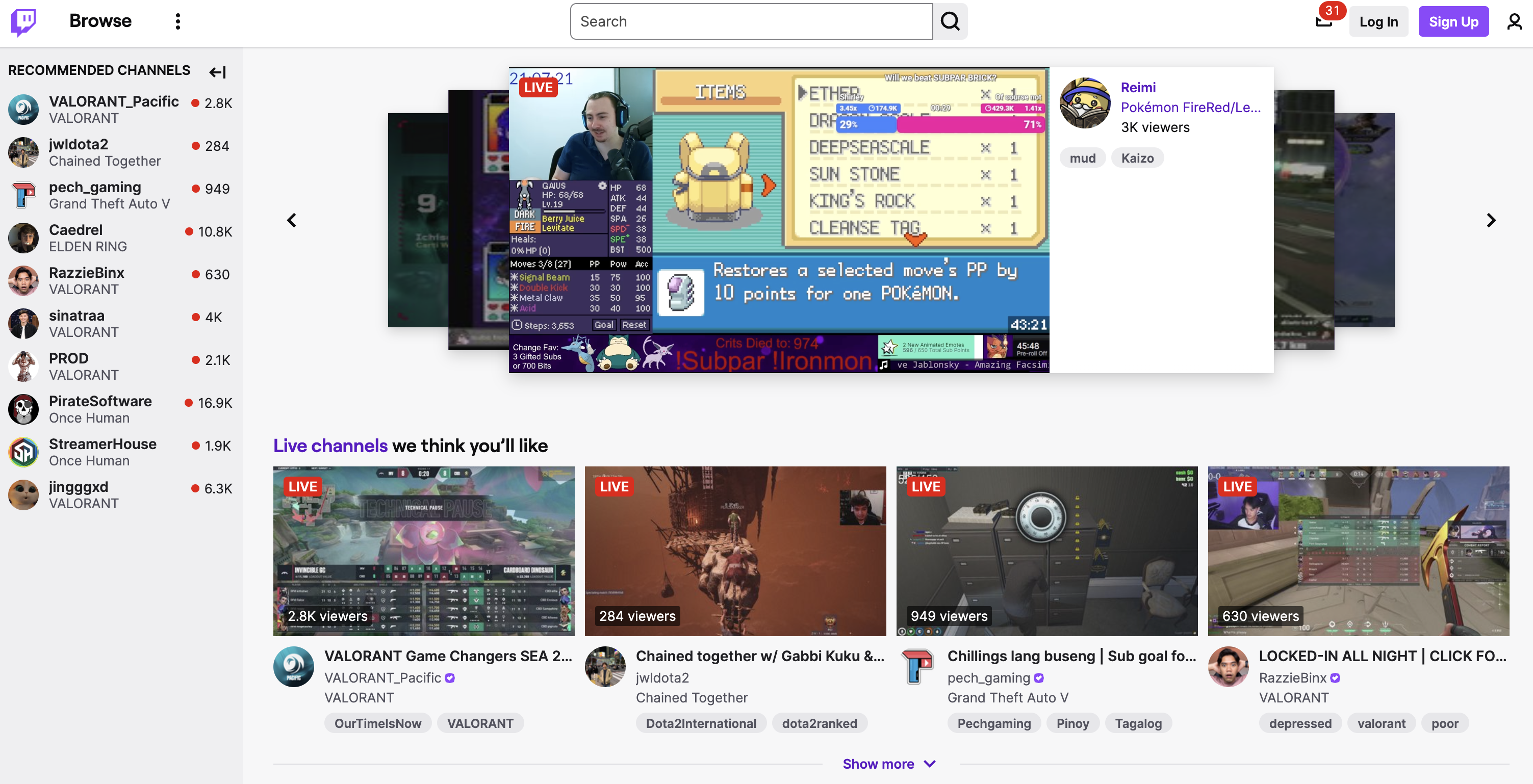
- Brief overview: Twitch is primarily a live streaming platform, but it also offers video hosting for past broadcasts.
- Pros:
- Large gaming community
- Interactive features
- Strong focus on live content
- Cons:
- Primarily geared towards live streaming
- Limited video editing tools
- Best for: Gamers, streamers, and those looking to engage with a live audience.
- Personal assessment: While Twitch is primarily a live streaming platform, it can be a good option for gamers and content creators who want to archive their broadcasts.
- Rating: 3/5
7. Brightcove
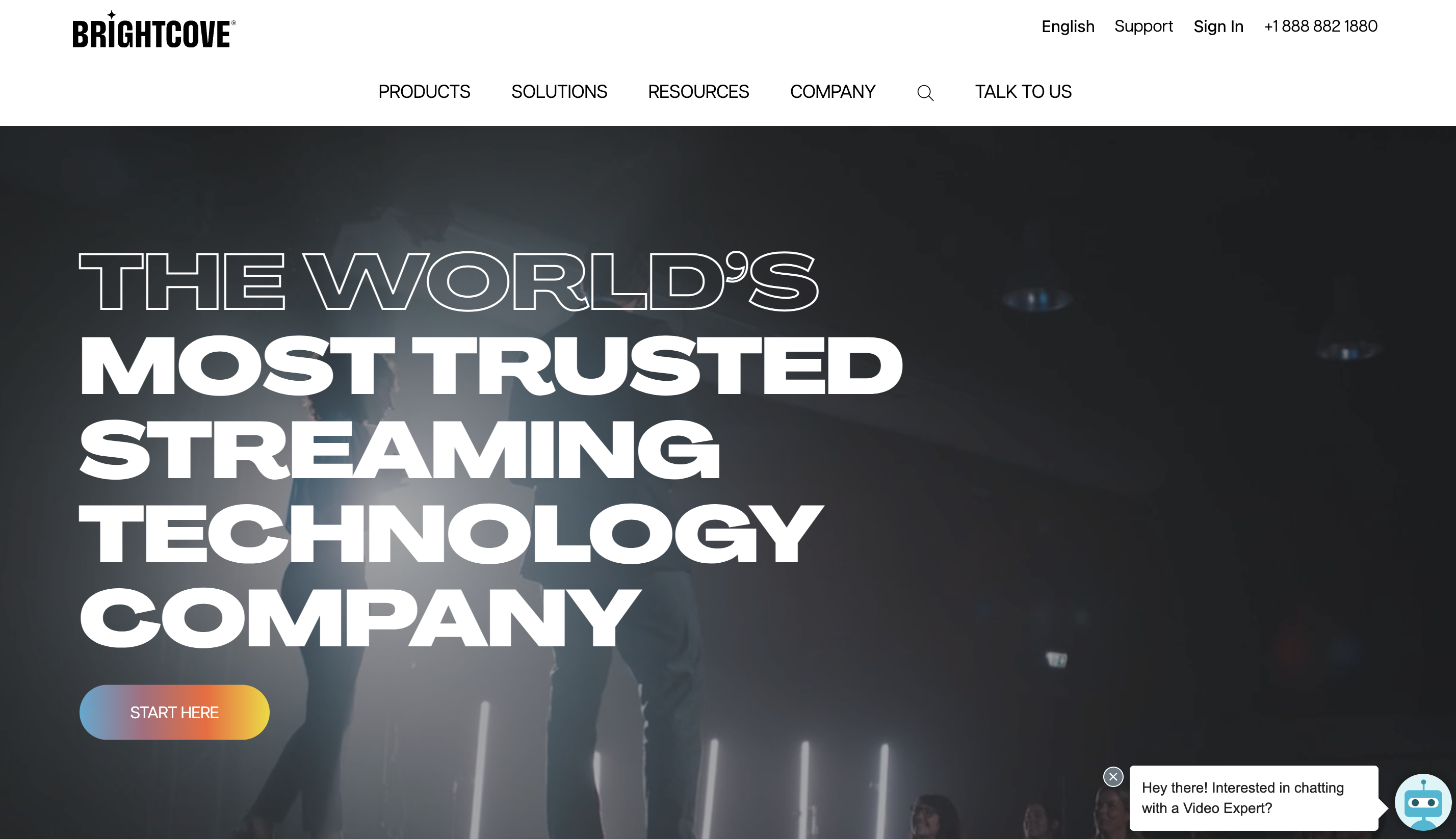
- Brief overview: Brightcove is a cloud-based video platform designed for businesses of all sizes.
- Pros:
- Comprehensive video management tools
- Advanced analytics
- Customization options
- Cons:
- Pricing can be high for small businesses
- Steep learning curve
- Best for: Enterprises and large businesses with complex video needs.
- Personal assessment: Brightcove offers a robust platform for businesses with extensive video requirements. However, the pricing and complexity might not be suitable for everyone.
- Rating: 4/5
8. Gumlet
- Brief overview: Gumlet is a modern video hosting and image optimization platform designed for fast, secure, and scalable media delivery. It offers adaptive streaming, AI-powered subtitles, real-time analytics, and easy integration for developers and businesses.
- Pros:
- High-performance video delivery with built-in CDN
- AI-generated subtitles and automated captions
- Ad-free, customizable video player
- Robust security features (DRM, watermarking)
- Developer-friendly APIs and easy integrations
- Cons:
- Limited free plan
- Less brand recognition compared to legacy platforms
- Best for: Businesses, creators, and developers needing fast, secure, and customizable video and image hosting.
- Personal assessment: Gumlet is an excellent choice for companies and creators who value performance, security, and modern features without the bloat of legacy platforms. Its developer tools and AI capabilities make it especially suited for fast-growing businesses.
- Rating: 4/5
9. Vidyard

- Brief overview: Vidyard is a video platform focused on sales and marketing, offering video hosting, creation, and analytics tools.
- Pros:
- Sales-focused features (video calls, screen sharing)
- Video analytics and insights
- CRM integration with system
- Cons:
- Limited free plan
- Primarily geared towards sales and marketing
- Best for: Businesses looking to use video for sales and lead generation.
- Personal assessment: Vidyard is a strong option for sales teams looking to leverage video content. Its focus on sales-specific features makes it a valuable tool for lead conversion.
- Rating: 4/5
10. Spotlightr
.png)
- Brief overview:Spotlightr is a video hosting platform designed for businesses, educators, and marketers, offering secure video hosting with advanced customization and analytics features.
- Pros:
- Secure and customizable video player
- Advanced analytics and engagement tracking
- Strong focus on privacy and monetization options
- Cons:
- Pricing may be high for small creators
- Not as widely recognized as mainstream video platforms
- Best for: Businesses, educators, and marketers who need secure, high-quality video hosting with advanced analytics.
- Personal assessment: Spotlightr is a solid choice for professionals looking for a private, customizable video hosting platform with in-depth viewer analytics and monetization tools.
- Rating: 4/5
11. Amazon S3
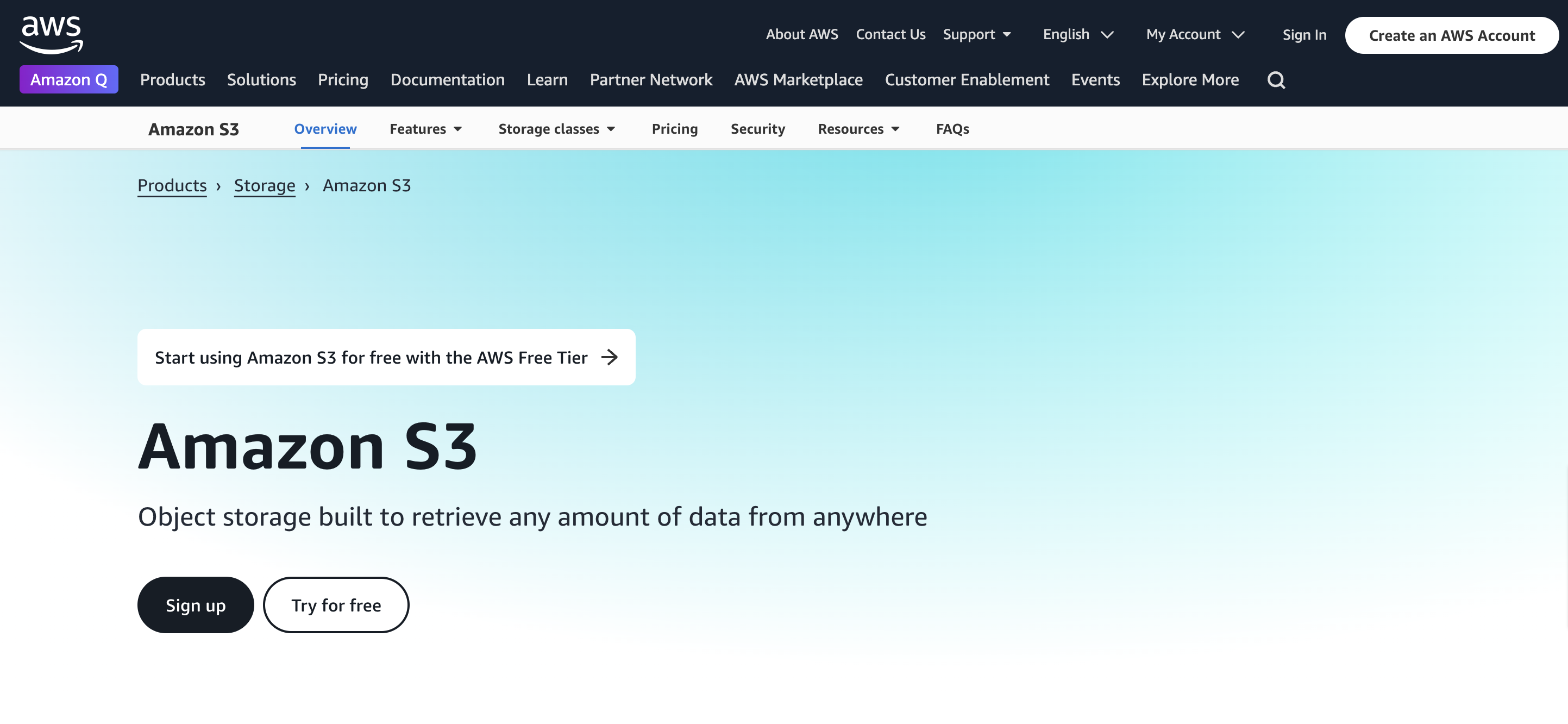
- Brief overview: Amazon S3 is a cloud storage service that can be used to host videos, but it requires additional tools for management and delivery.
- Pros:
- Scalable storage
- Cost-effective for large video libraries
- Customizable
- Cons:
- Requires additional tools for video management and delivery
- Complex setup
- Best for: Large enterprises with in-house video infrastructure and specific storage needs.
- Personal assessment: Amazon S3 is a viable option for those with technical expertise and the resources to build a custom video hosting solution. It’s not recommended for most users due to its complexity.
- Rating: 3/5
12. Kaltura
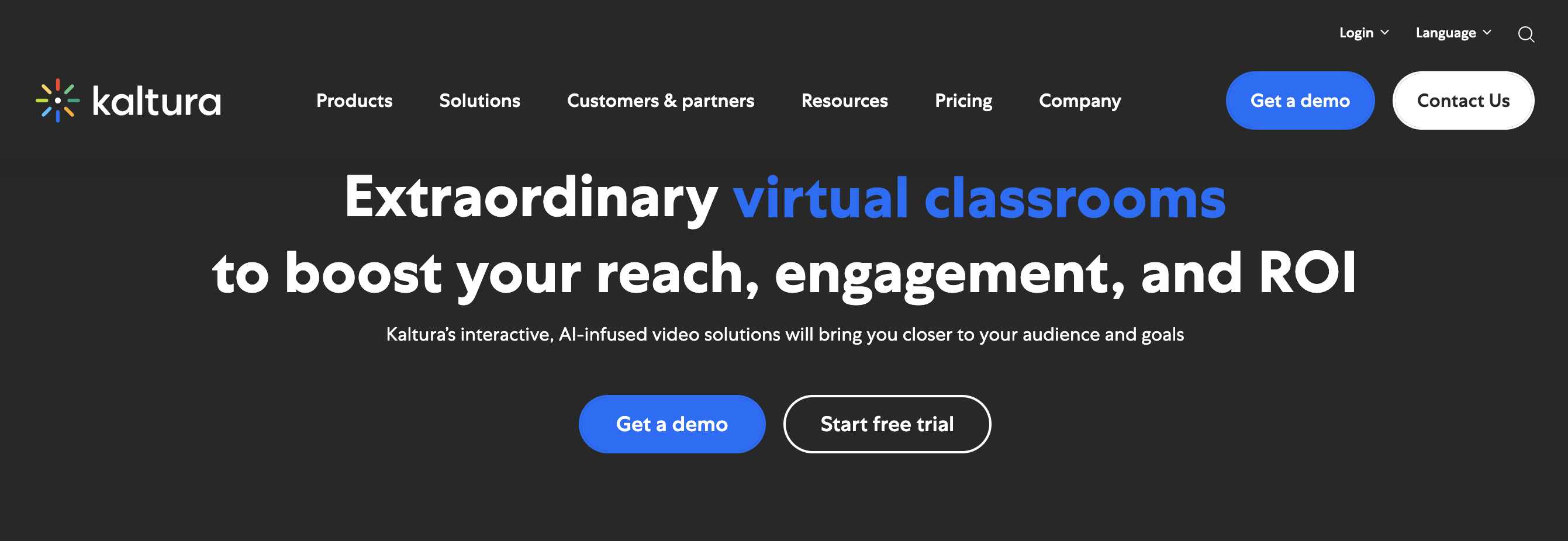
- Brief overview: Kaltura is a video platform offering a wide range of features, including video hosting, live streaming, and video management.
- Pros:
- Versatile platform with many features
- Customizable
- Strong focus on enterprise solutions
- Cons:
- Can be complex to set up
- Pricing can be high
- Best for: Enterprises and organizations with complex video needs and a budget for a comprehensive solution.
- Personal assessment: Kaltura is a powerful platform with a wide range of capabilities. However, its complexity and cost might be prohibitive for smaller businesses.
- Rating: 4/5
Conclusion
Choosing the right video hosting platform is crucial for businesses and individuals alike. This review has examined ten popular options, evaluating each based on pricing, features, performance, and user experience.
Key Findings:
- YouTube reigns supreme in terms of audience reach but faces intense competition.
- Vimeo excels in video quality and aesthetics but comes with a price tag.
- Wistia and Vidyard are strong contenders for businesses focused on marketing and sales.
- Brightcove and Kaltura cater to large enterprises with complex video needs.
- Twitch is ideal for live streamers and gamers.
- Amazon S3 is a cost-effective option for those with technical expertise.
Recommendations:
- Small Businesses: Consider platforms like Wistia or Vidyard for their focus on marketing and sales, or opt for YouTube or Vimeo for a balance of features and audience reach.
- Content Creators: YouTube or Vimeo are excellent choices for building an audience. For a more professional look, Vimeo is preferred. For video content creators seeking to establish a robust online presence, reliable web hosting is crucial. Host4Geeks offers affordable SSD-based shared hosting plans starting at $2.49/month, providing features like unlimited bandwidth, free SSL certificates, and 24/7 customer support.
- Enterprises: Brightcove or Kaltura offer comprehensive solutions, while Amazon S3 might be suitable for specific storage needs.
Ultimately, the best video hosting platform depends on your specific requirements. By carefully considering your needs and the information provided in this review, you can make an informed decision.
We encourage you to explore the platforms further and experiment to find the perfect fit for your video content.

